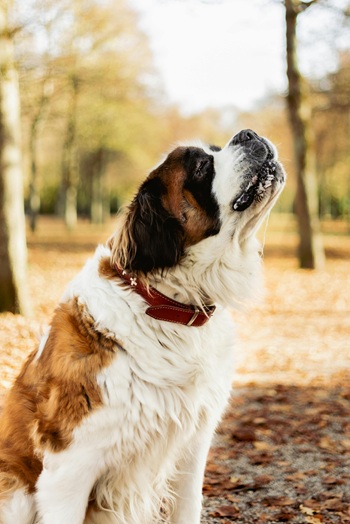Saint Bernards are one of the most recognizable and beloved dog breeds, known for their massive size, gentle temperament, and history as rescue dogs in the Swiss Alps. These affectionate and loyal companions make excellent family pets, but they do require specific care and an ideal environment to thrive. If you’re considering adding a Saint Bernard to your household, here’s what you need to know.
Characteristics of Saint Bernards
Saint Bernards are giant dogs, often weighing between 120 to 180 pounds. They have a thick coat that can be short or long and typically display a mix of white and brown markings. Their friendly and patient nature makes them wonderful companions for children and adults alike. However, due to their size, they require ample space to move around comfortably.
Best Environment for a Saint Bernard
While Saint Bernards can adapt to various living situations, they are best suited for homes with:
- Ample Space: A large yard or spacious home is ideal since they need room to move and stretch.
- Cool Climates: Due to their thick coats, they are more comfortable in cooler temperatures and can overheat easily in warm climates.
- Family Interaction: These dogs thrive on companionship and should not be left alone for extended periods.
Caring for Your Saint Bernard
Owning a Saint Bernard comes with unique responsibilities. Here are some basic care tips:

1. Grooming Saint Bernards shed year-round, with heavier shedding occurring seasonally. Regular brushing (at least 2-3 times per week) helps keep their coat healthy and minimizes shedding. Bathing should be done as needed, usually once every few months unless they get particularly dirty.
2. Exercise Needs Despite their size, Saint Bernards do not require excessive exercise. A couple of moderate daily walks and some playtime in a secure yard will keep them happy and healthy. Avoid strenuous exercise, especially in hot weather, to prevent overheating.
3. Nutrition and Diet A well-balanced diet is crucial to maintaining their health. High-quality dog food with the right balance of protein, fat, and nutrients is essential. Due to their size, portion control and scheduled feeding times help prevent obesity and bloat, a common health issue in large breeds.
4. Training and Socialization Saint Bernards are intelligent and eager to please, making them relatively easy to train. Early socialization and consistent training help prevent behavioral issues and ensure they grow into well-mannered companions. Due to their size, leash training is particularly important.
5. Health Considerations Like all giant breeds, Saint Bernards are prone to certain health concerns, including:
- Hip and elbow dysplasia
- Heart issues
- Bloat (gastric torsion)
- Eye conditions like entropion
Regular veterinary check-ups and a proper diet can help mitigate these risks and ensure a long, healthy life for your dog.
Final Thoughts
Saint Bernards are affectionate, devoted, and excellent family dogs when provided with the right environment and care. They do best in homes that can accommodate their large size and grooming needs, and they require proper training and socialization from a young age. With the right attention, a Saint Bernard can be a loving and loyal companion for many years to come.


Comment here